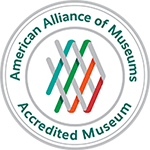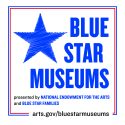This blog introduces the exhibition Rural Avant Garde: The Mountain Lake Experience showing at Cedarhurst October 18 through January 3, 2021. The exhibition was organized by the Longwood Center for the Visual Arts in Farmville, Virginia. In 2018, the companion book was published as The Mountain Lake Symposium and Workshop: Art in Locale. Edited by Ray Kass and Howard Risatti.
The Mountain Lake Symposium and Workshop (MLSW) was begun in 1980 by Virginia Tech art professor Ray Kass and co-directed with art historian Howard Risatti of Virginia Commonwealth University. The conferences were held at a rural retreat center at Mountain Lake in the Appalachian region of western Virginia and has evolved into an ongoing art project.

Installation view of Rural Avant Garde, Finster left, Cage right. Photo: R. Freeman
From the beginning, Kass’ goal for the MLSW was to bring together the leading art critics with the best collaborative visual artists and also invite the local communities to participate. Some of the participants included artists John Cage, Howard Finster, and Sally Mann with critics Donald Kuspit, Clement Greenberg, and Rosalind Krauss.

Primal elements were used in art making at Mountain Lake. Photo courtesy of Longwood Center for the Visual Arts.
The MLSW might be explained with one word, collaborative. Kass nurtured collaboration in the symposium where literary critics talked with visual artists and this interdisciplinary approach continued in the workshops. Kass’ background as a poet-painter led him to venerate the interdisciplinary benefits of merging the literary with the visual.

Installation view of three Howard Finster collaborative paintings. Photo: R. Freeman.
In important ways, MLSW questioned the role of art in society today asking the hard question: “Does Art stand for something beyond existing as a mere commodity?” Howard Risatti answered, in the book’s epilogue, that the MLSW approach to the artist’s role was to work with and for local communities. MLSW used cross-disciplinary approaches involving a variety of skills and talents, all collaborating to create art works representing the shared values of all participants. Risatti summarized the MLSW programs as providing “a pathway to give the individual and collective imagination the potential to realize a meaningful and socially responsible relationship to the world… through the aesthetic experience.”

Detail of Howard Finster, Empty Road, 1987, silkscreen. Photo: R. Freeman.
There is a parallelism to their approach and what we do here at Cedarhurst. Kass and Risatti believed that high principled art making could be a collaborative event and that the art making and discussions take place in the very community that makes the art. So does Cedarhurst.

John Cage was an inspiration to many disciplines of artists, here, painting at Mountain Lake. Photo courtesy of Longwood Center for the Visual Arts.
Communities produced art at Mountain Lake that were collaborative explorations of the meanings and functions of art. Experts from computer science, physics, biology, and the social sciences worked with visiting artists and the community to make new artworks and explore new research initiatives. Participants were encouraged to take risks and experiment with indeterminacy, a concept used by composer and artist John Cage. “Indeterminacy” meant taking the risk to make art relying on chance and trusting in the many possible results instead of relying on pre-determined outcomes.
The Mountain Lake experience exemplifies Ray Kass and Howard Risatti’s risk-taking dream for cross-disciplinary projects melding art with science.





